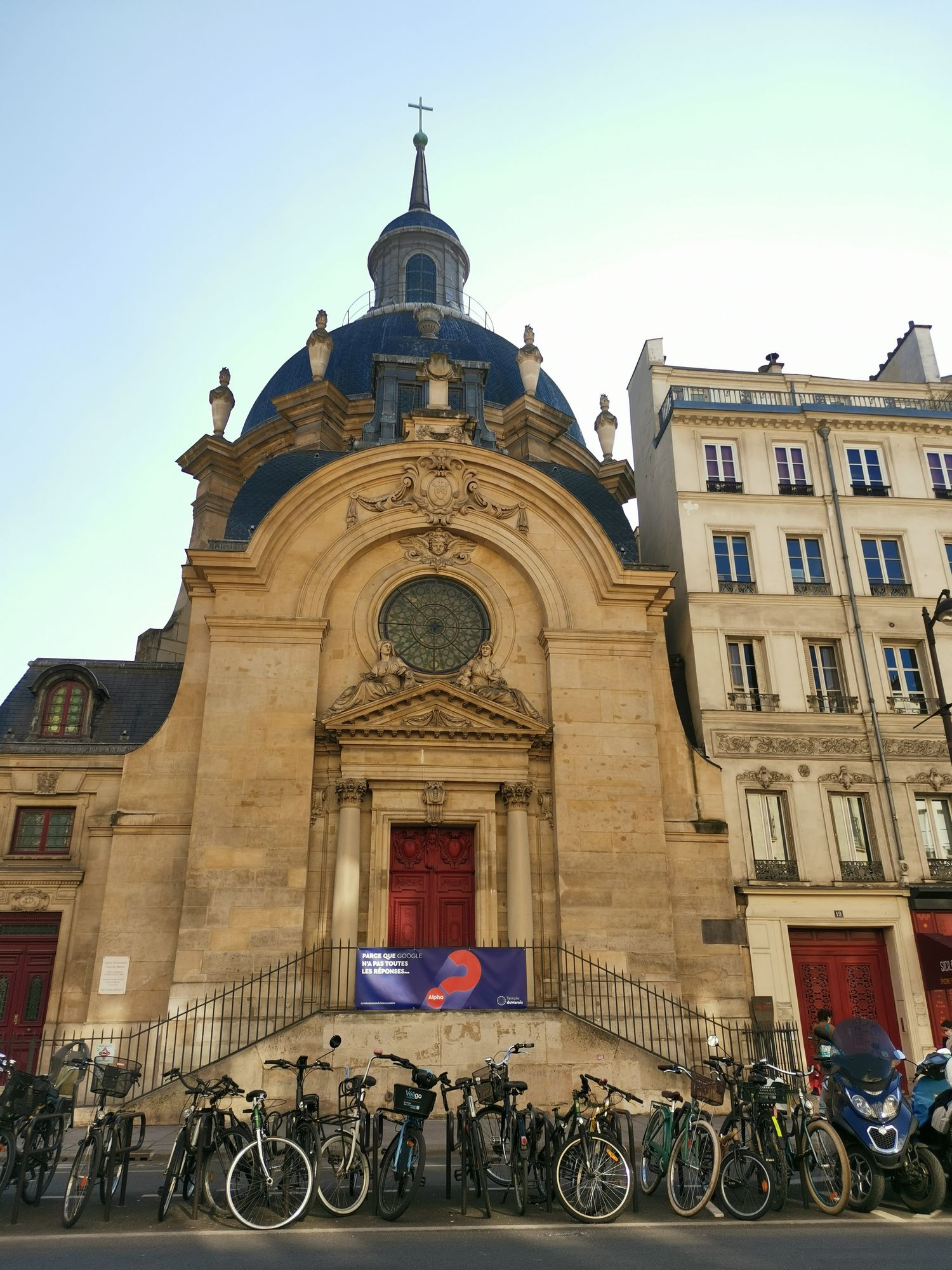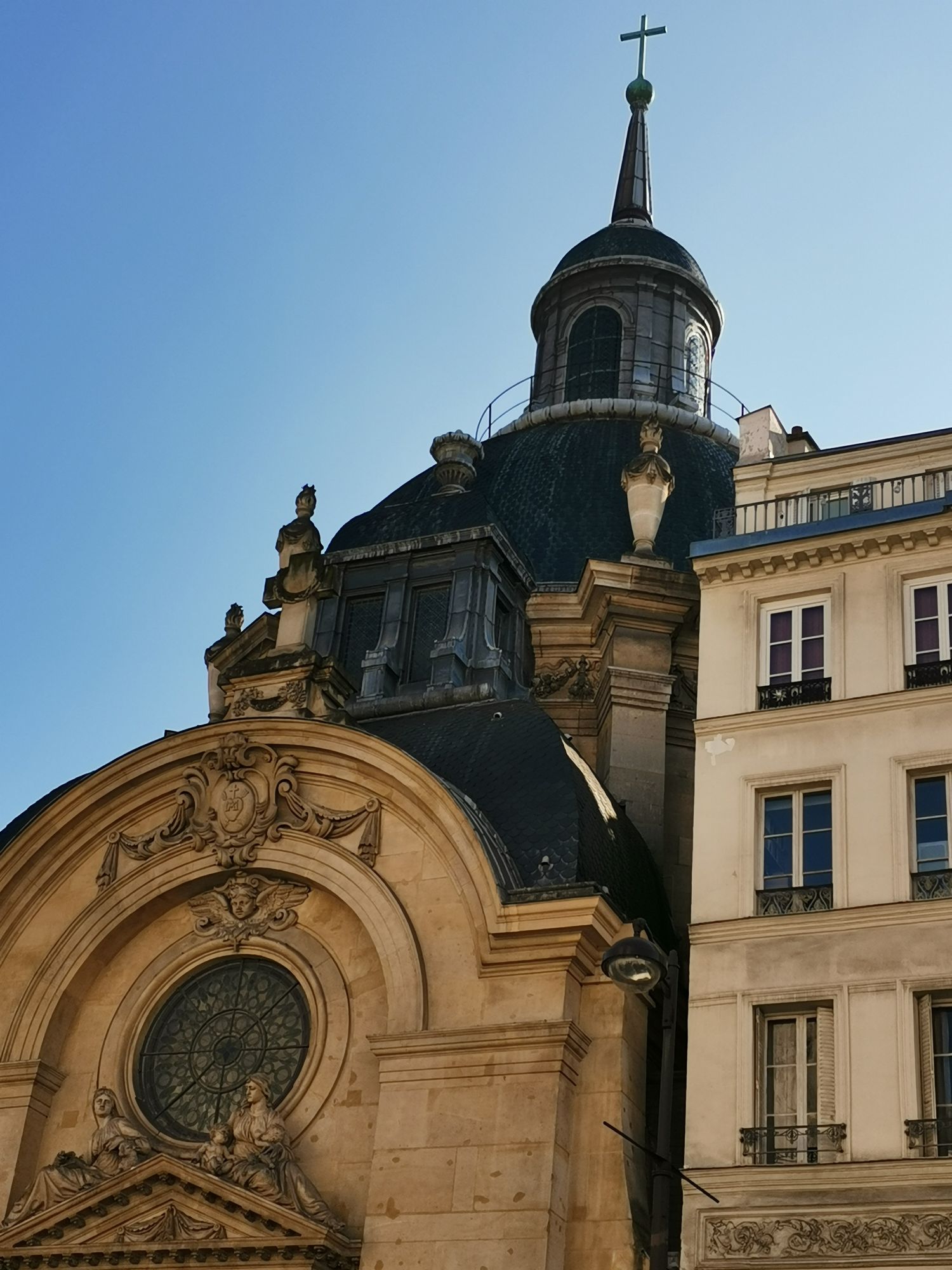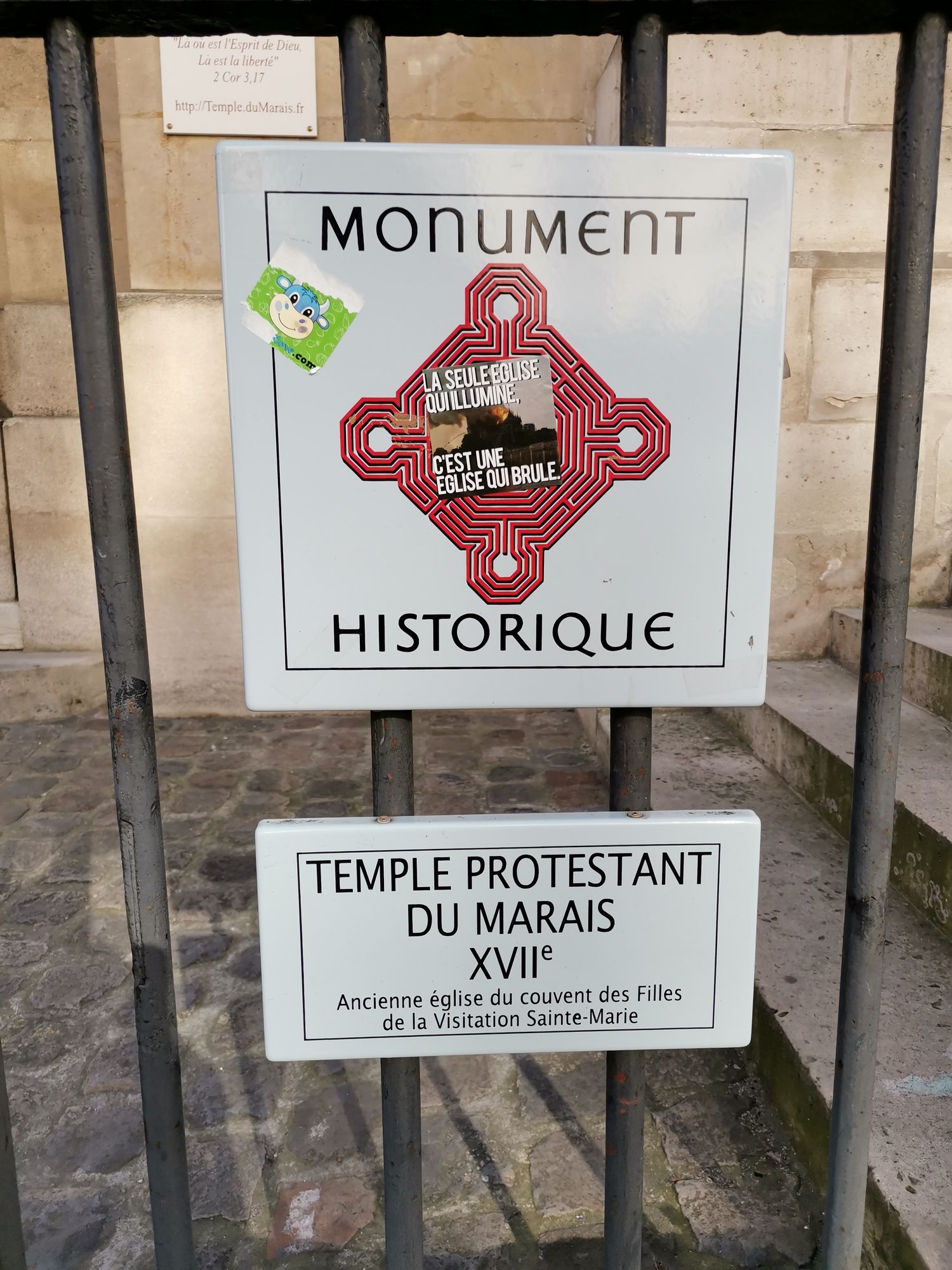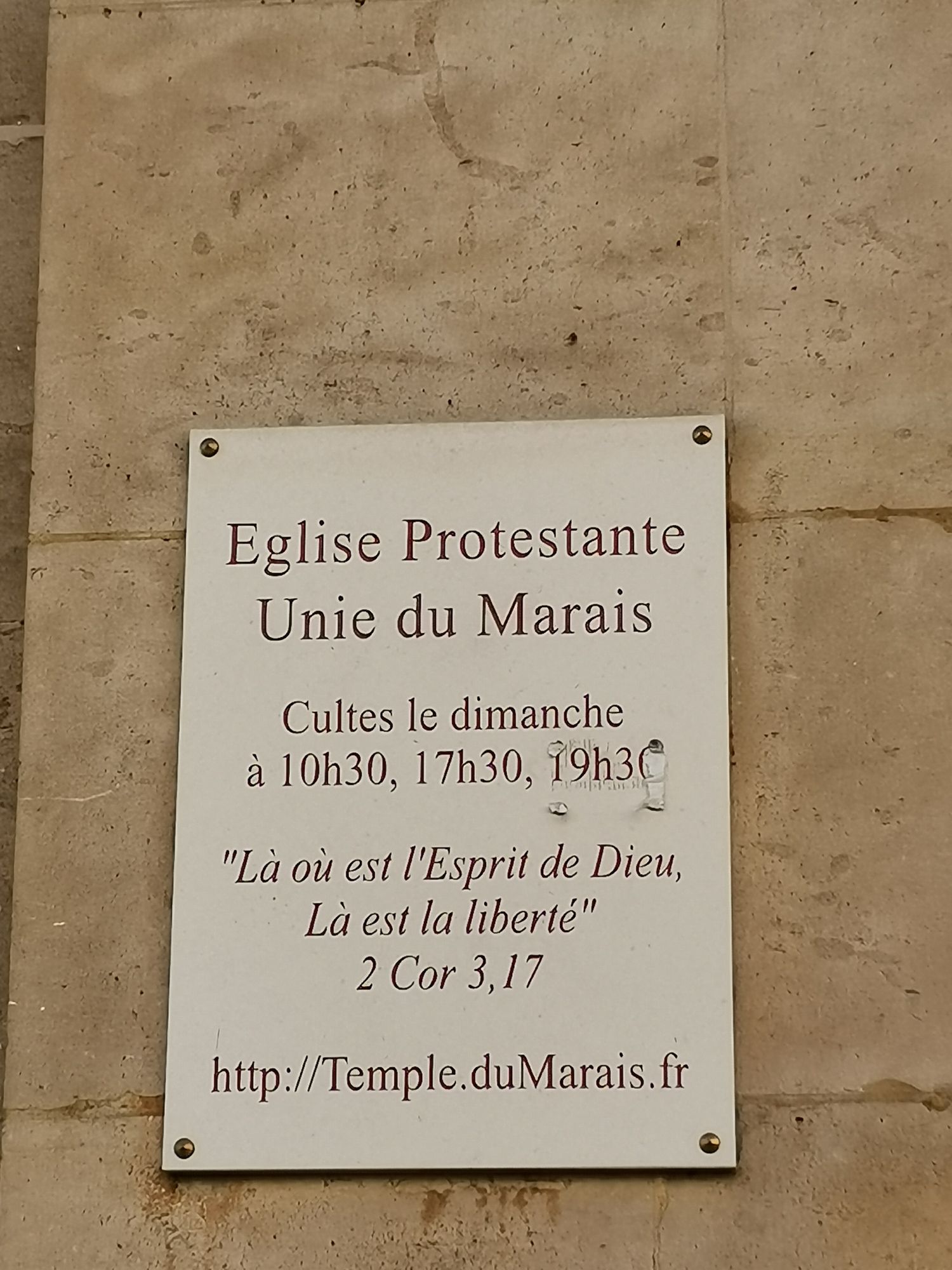Protestant Temple of the Marais
 The Temple Protestant du Marais, originally a Catholic church, the Église Sainte-Marie, let's discover its amazing history...
The Temple Protestant du Marais, originally a Catholic church, the Église Sainte-Marie, let's discover its amazing history...Where is the Protestant Temple in the Marais?
The address is 17 rue Saint-Antoine, 75004 Paris, accessible via the Saint-Paul or Bastille metro stations.
What is the origin of the Église Sainte-Marie du Marais?
The origins of the Église Sainte-Marie du Marais date back to 1628, when the Visitation Order purchased the Hôtel de Cossé, located on rue Saint-Antoine in Paris. In its place, a church was built under the name of Sainte-Marie des Anges, designed by the architect François Mansart and built by Michel Villedo between 1632 and 1634.
What makes the church's architecture so special?
The church's architecture is remarkable, with a dome that can be considered a first sketch of the one at Les Invalides. The building features a rotunda structure flanked by two elliptical chapels, with two sacristies framing the trapezoidal choir.
What was the role of this building before it became a “ Protestant temple ”?
Before it became a Protestant temple, it was the church of the Visitation Sainte-Marie convent. This convent was the mother house of the Visitation convents in Paris. It was founded in 1621 by François de Sales and Jeanne de Chantal.
Who built this church?
The church was built by master builder Michel Villedo to plans by François Mansart, under the name of “Sainte-Marie-des-Anges”.
Noël Brûlart de Sillery, knight of the Order of Malta and honorary squire to Queen Marie de Médicis, founded the Filles de Sainte-Marie church on rue Saint-Antoine.
What are the most important events to have taken place at the church in the Marais?
Personalities such as Nicolas Fouquet, superintendent of finance, and Henri de Sévigné, husband of Marie de Rabutin-Chantal, were buried in the church. In 1698, Louise Philiberte, known as “Mademoiselle de Carignan”, was taken there at the request of the Duke of Savoy, Victor Amédée II.
What happened to the convent and surrounding estate?
The Visitandine convent was confiscated and demolished during the French Revolution. The convent house and outbuildings were sold to private individuals in 1796 and 1797, and rue Castex was opened on its site in 1805.
==How did the former Catholic church become a Protestant temple?
By decree of the First Consul Bonaparte in 1802, the church was assigned to Reformed worship, thus becoming a Protestant temple. Worship has been held here since May 1, 1803, and the building was listed as a historic monument in 1887 under the name Temple Sainte-Marie.Are there any other Protestant temples linked to the Église du Marais?
Yes, in 1902, the parish founded the Temple de Bercy in the 12th arrondissement of Paris. Originally located at 5 rue Taine, it later moved nearby to 13 rue de la Lancette. However, the Bercy temple has since been demolished.
Can you tell us about the architecture of the Marais Protestant temple?
The temple is inspired by the Pantheon in Rome and was designed by François Mansart. It comprises a rotunda measuring 13.50 meters in diameter, with four chapels adjoining in a centered plan. Contrary to custom, the temple is oriented north-south, with the entrance to the north and the communion table to the south.
==The Temple protestant Marais in brief
In 1628, the Visitation Order purchased the Hôtel de Cossé on rue Saint-Antoine and built a church dedicated to Sainte-Marie des Anges. Designed by François Mansart, it was built by Michel Villedo between 1632 and 1634. Its dome can be seen as a first sketch of the one at Les Invalides. The building takes the form of a rotunda flanked by two elliptical chapels, while two sacristies frame the trapezoidal heart.
The Visitandine convent was confiscated and demolished during the French Revolution. Since 1802, the church has been used for Protestant worship.
The Marais Protestant temple, steeped in the history of Paris, embodies a rich architectural and spiritual heritage, having been a Protestant place of worship for over two centuries. It is a fascinating witness to the evolution of the city and the religious freedom that has marked its history.
Back to the list of churches and synagogues in the Marais


